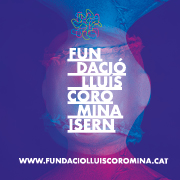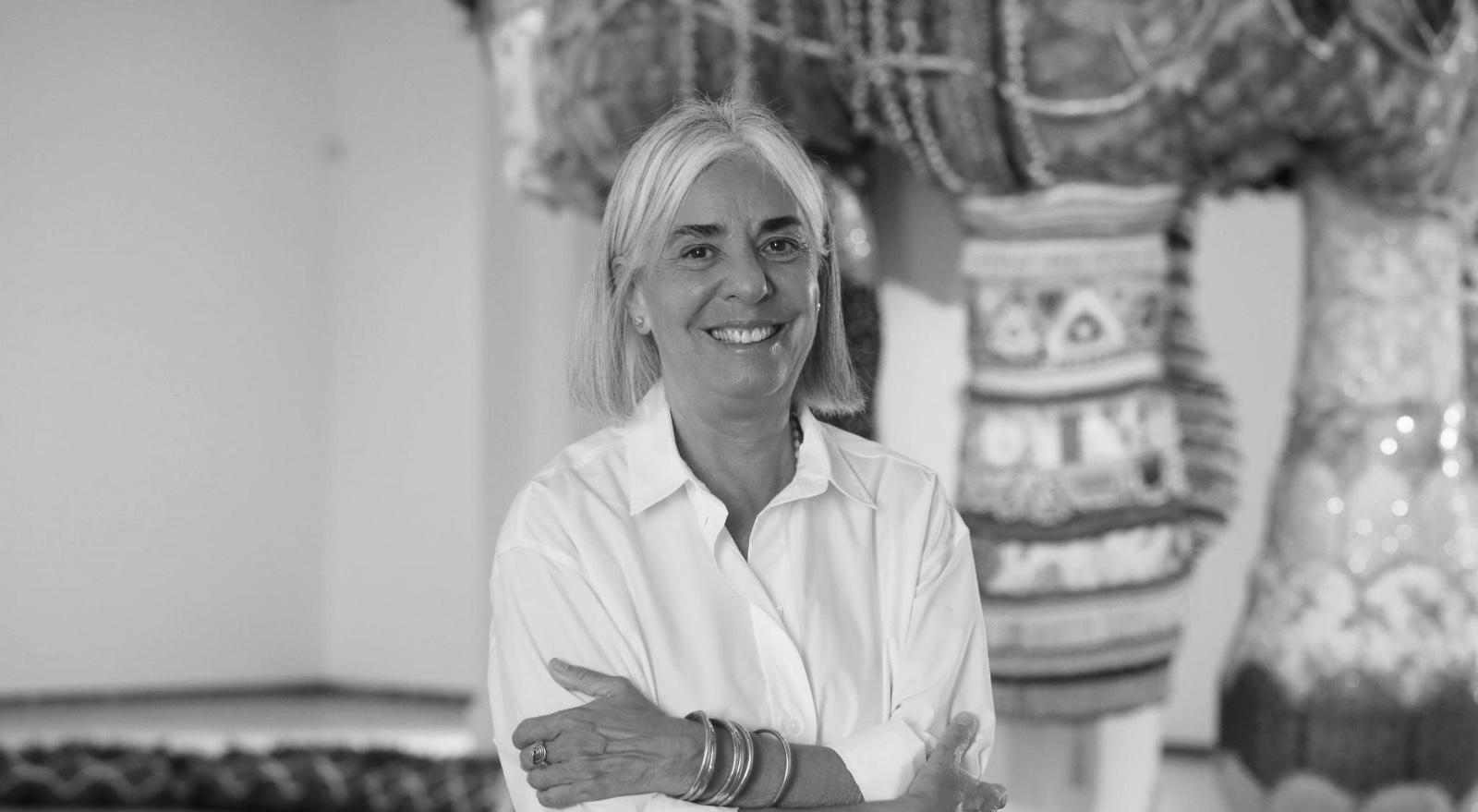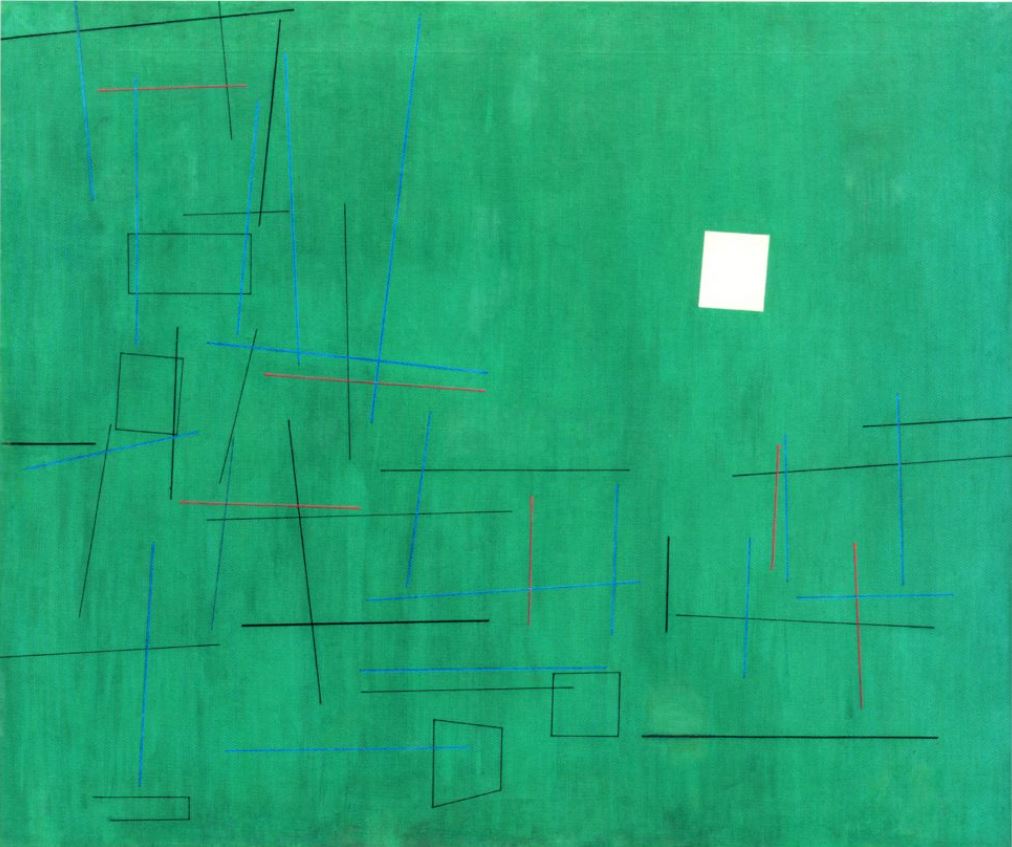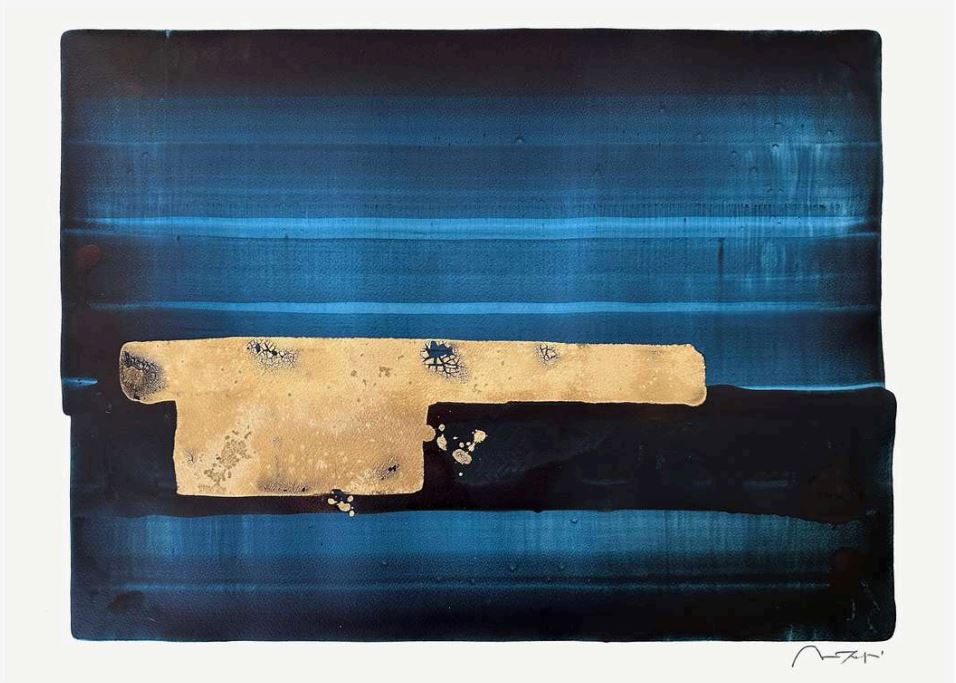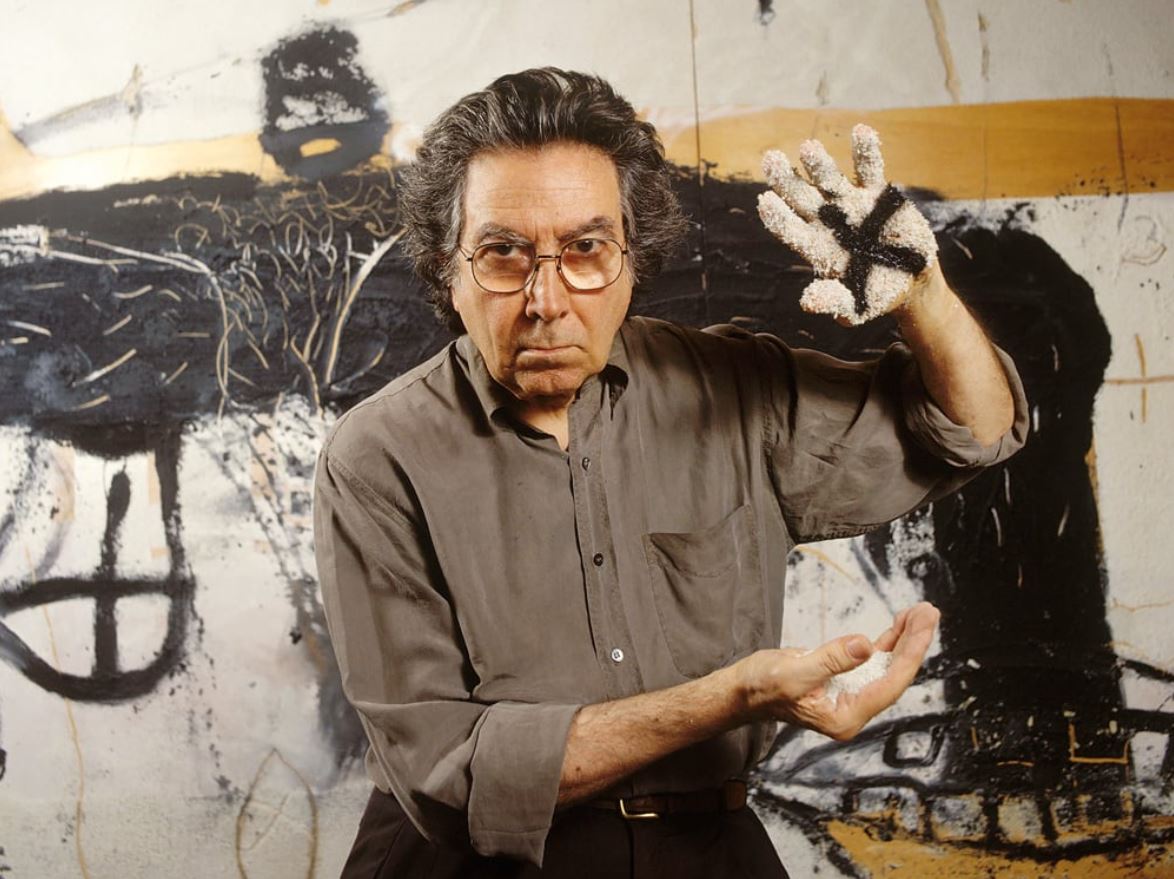Editorial
Sex, Ibiza, Locomia.... Santi Moix as claim
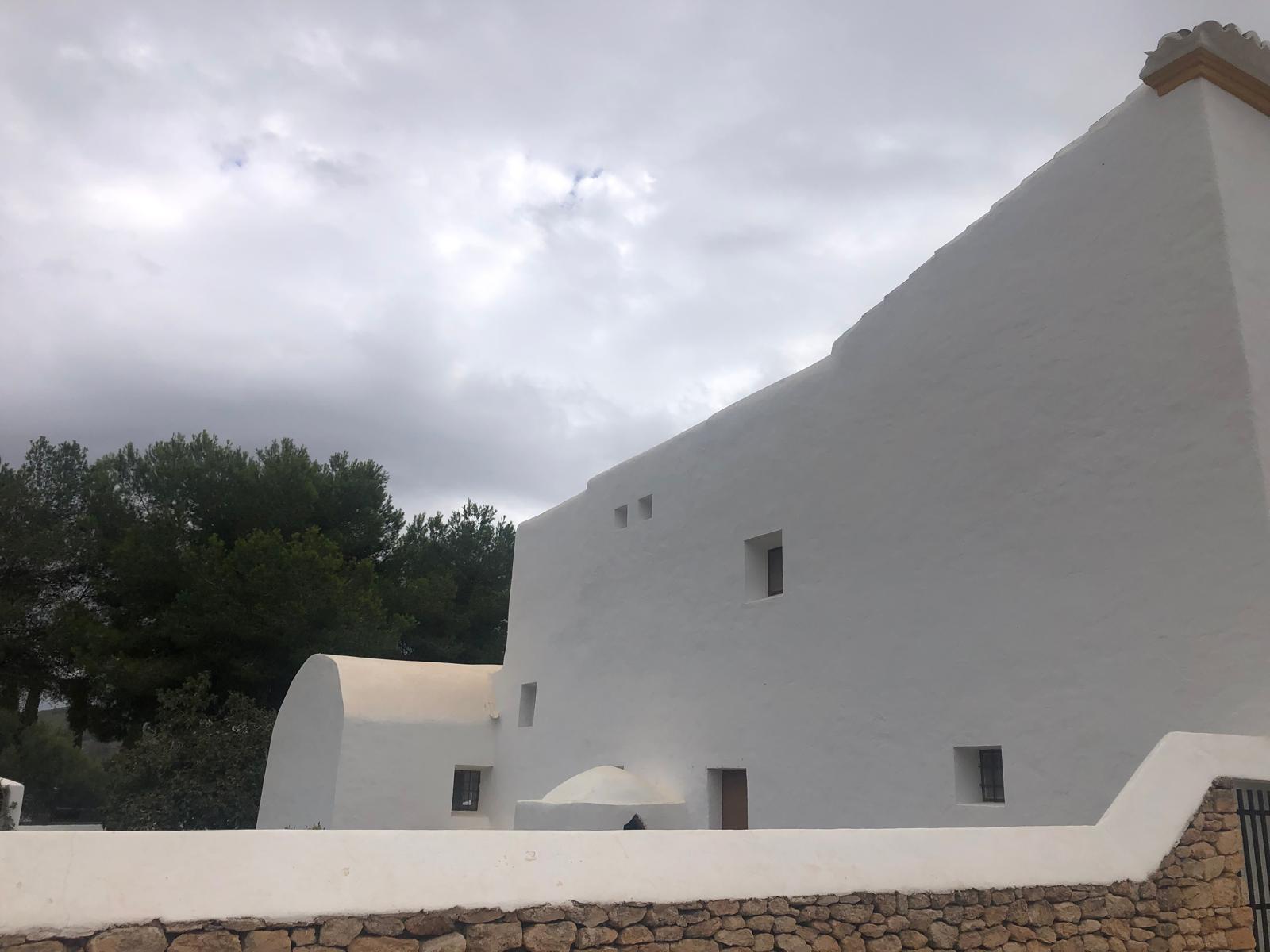
The flowers turned black
and asexual
They stopped attracting insects,
if there were still any.
At this point,
a black calyx without stamens or pistils,
of hermetic and heraldic beauty,
the plant was dying.
Some tried to feed themselves
with these bitter petals
plastic texture.
They dried them and ground them
but they were toxic,
they caused fevers, diarrhea and tremors
and a final suffocating paralysis.
Enrique Juncosa Poem for the exhibition
The discovery of the Fire of Santi Moix.
When among your acquaintances – more and less cultured – you say that you are going to Ibiza to see an exhibition of an artist friend, everyone looks at you with a strange grimace. Ibiza and culture? Well yes, Ibiza and culture and visual arts... and also nature, gastronomy and a bit of fun, obviously! The first to put clichés about this region, some won by force and thanks to the misunderstood tourist pandemic, is me. I had never been to the island, even though I've been halfway around the world. I resisted because I was not motivated at all by the stimuli and news that were always generated about this place. Yes, I admit it, I'm a bit of a geek and I'm only motivated to travel if I can find cultural-patrimonial derivatives, although then the people of the region, the gastronomic culture, the customs, the landscape often end up seducing you. Family and friends already know that it is like an addiction to visit museums, artists' workshops... Recently, I traveled to Ibiza to visit the exhibition of the artist Santi Moix in the contemporary art museum of Ibiza (MACE) and interviewing the director, Elena Ruiz, a pleasure both.
.jpeg) Capvespre wagnerià des del Cafè del Mar. Sant Antoni de Portmany
Capvespre wagnerià des del Cafè del Mar. Sant Antoni de Portmany
And just getting on the plane that will take me from Barcelona to the unknown island, next to my seat, there is Neus Escandell, the Ibizan publisher of Balàfia Postals. We didn't know each other, but I hear her talking about Miró and so begins an informal conversation that leads to Walter Benjamin and an edition he published under the title "Relats d'Eivissa". We talk about tourism, the problems and the positive results it has also generated and she tells me with a laughing tone that at the time I was being a tourist on the islands and she had just done it in Barcelona, despite not wanting to enter into this conceptual framework . An hour passes quickly and we land in Ibiza - IBIZA, in Spanish, known for many years also thanks to the Seat car and the Locomia group (I'll talk about it later).
.jpeg) Elena Ruiz, directora del MACE, davant de la instal·lació mural de Santi Moix
Elena Ruiz, directora del MACE, davant de la instal·lació mural de Santi Moix
Leaving the plane the temperature has increased and as I go to look for the hotel, I see the landscape and it leads me to connect with the excursions in Morocco or the Alicante area. Low houses, reddish soil, unique, exotic vegetation, the horizons and the energy that is breathed through the natural areas seduce me at once. The intense urbanism is much more concentrated than I could have imagined, there is 65% of the island that has the dominant nature, a nature that connects you with yourself, as we are nature. Wine tasting from the area and heading to see the Wagnerian sunset from a legendary place, emulating what the painter Joaquim Mir did every day when he summered in Mallorca. Mir, however, whenever the sun went down I applauded it in deference to the impressive spectacle of beauty it represents. Good night and sleep early. The following day, an interview with Elena Ruiz, director of the contemporary art museum in Ibiza, "the boss" of culture in the area. The museum is a space that can go unnoticed, within the impressive fortification of the old area - Dalt Vila -, but which becomes an oasis when the human rush is concentrated in the alleys. Inside the MACE, Santi Moix's installation makes us connect with the history of art with nature as a pretext. The exhibition hall of ancient remembrance becomes majestic. Shining the continent and the content. Color, intensity, explosion of ideas, contemporary still lifes... Santi's works are a joy. A quick tour of the museum's collections leads me to come across several relief works, but I stop to look at the sculpture by the artist Stella Rahola Matutes, which I have always loved and which will soon be on the cover of next number 200 of bonart. Recycled glass to build imaginary urbanisms. She, with close roots on the island, will surely soon be the next to exhibit in those magnificent rooms.
.jpeg) Escultura d'Stella Rahola Matutes
Escultura d'Stella Rahola Matutes
But we continue the journey to look at this magnificent fortification that dates, the renovation, from the 16th century, and was part of the plan to modernize the coastal defenses of the Mediterranean, promoted by Charles I and Philip II, to maintain and defend the territories of the Crown in a time of continuous war conflicts with France and the Ottoman Empire. I also discover an art space of the council of Ibiza, Sa Nostra Sala, near the historic center where the painter Vicent Boïl is exhibiting, a Valencian who won the Vuit d'Agost prize and who creates geometric and organic worlds at the same time and full of chromatic vitality.
.jpeg) El pintor Vicent Boïl a Sa Nostra Sala
El pintor Vicent Boïl a Sa Nostra Sala
In the evening, an unmissable visit to Can Pau, a legendary restaurant on the island and epicenter of culture and social events. Alba Pau, a Banyolina by birth and with a family tradition full of culture and patronage, lived there more than forty years ago. I discover another Ibiza, when the focus of the summer goes off, but when other social dynamics come on. The culture councilor of the town where the restaurant is located, near Santa Gertrudis de Fruiteria - which belongs to Santa Eulària des Riu - also works there. This town is small, tidy, beautiful and white. There is an exquisite 11th century church dedicated to this virgin who rescued souls from purgatory and with a side of poignant rationalist architecture. Very close, between the streets, I discover the Parra i Romero gallery, which is also based in Madrid. Finally, good memories and back to Barcelona, rummaging through my mobile phone and photographs of the moment I found, I discover on Netflix the history of the Locomia group, founded in the eighties by a Catalan, Xavier Font, in Ibiza, and that since the islands were projected to the world with costumes, music and delirious energy. A good ending.
[filebeback]



